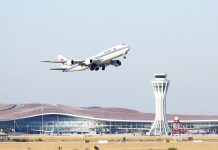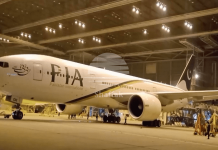Bureau Report
PESHAWAR: Established in the heart of Peshawar some 150 years back on Sher Shah Suri Road, Peshawar Museum having a unique treasure of 30,000 antiquities of Gandhara civilization is all set to attract international tourists and followers of Buddhism in droves following completion of ongoing renovation work to enhance its architectural outlook. Being a lone museum of Gandhara Art in the world having around 30,000 antiquities and a complete life story of Founder of Buddhism, Lord Buddha, Peshawar Museum is going to become an international center for Gandhara Art lovers after completion of expansion, renovation and preservation work currently in progress under Khyber Pakhtunkhwa Integrated Tourism Project (KITE).
Lateefur Rehman, Spokesperson Archeology and Museums Department told that conservation work on Peshawar Museum was initiated under the umbrella project of KITE worth Rs 17billion with assistance of World Bank to bring it at par with international standards and enhance its architectural value.
“We have engaged skilled laborers and hired consultants for conservation works that will be completed soon,” he said. Being the world’s largest Museum of Gandhara Art, Peshawar Museum had a unique distinction of housing more than 30,000 antiquities out of which 14,000 were put on display for tourists, archeologists, and followers of Buddhism and the rest were kept preserved,” said Noor Khan, Incharge Peshawar Museum.
Following completion of the work, he said, remaining artifacts would also be put on display for general public and international tourists.
“It is the only museum in the world where a complete life story of the Founder of Buddhism, Lord Buddha was available and kept preserved in the forms of statues and panels, attracting followers of Buddhism and international tourists throughout the year,” he said. Besides ancient dresses of Waziristan tribes, primitive cooking utensils and jewelry, he said adding, it was the only museum of South Asia where muzzleloader guns mostly used by British Army and Swords of freedom fighters, kings, warriors and punch marked coins were displayed.
“Most of these antiquities were adorned with museums in colonial period attracting foreign tourists from Europe, Thailand, Nepal, Sri Lanka, China, Japan, Turkey, Malaysia, SAARC and South East countries.”
He said about 6,000 archeological sites were so far discovered in KP and important antiques collected from these sites were also preserved at Peshawar Museum. Recalling its past history, Spokesperson of Archeology said the Museum was started as Victoria Hall in 1896 initially used as Dancing Club and was later converted into Peshawar Museum in 1906.
The present main hall of the museum was built in 1906 in the memory of Queen Victoria at the cost of Rs.60,000, out of which Rs.45,000 were donated by the public of then NWFP (now Khyber Pakhtunkhwa) and Rs15,000 by Director General of the Archaeology of that time. Following completion of building, the museum was set up in November 1907 to house Gandhara sculptures excavated from major Gandhara sites of Shah-Ji-Ki-Dheri Peshawar, Sahri Bahlol, Takht-i-Bahi in Mardan district and later from Jamal Garhi and other Gandharan sites excavated by British archeologists.
The two-storey building, an amalgamation of the British and Mughal architectures, originally consisted of a main hall and two side aisles on ground and first floor, surmounted by four elegant cupolas and small pinnacles on all corners.
On the eastern and western side of the building, two halls were added in similar fashion in 1969-70. After its inception in 1907, Peshawar Museum was run by the Peshawar Municipality and Superintendent of Archaeological Survey of that time, Frontier Circle was Curator of the Museum.
When the Frontier Circle Office was shifted to Lahore in 1927, a full time Curator was appointed under the Provincial Government. Following independence of Pakistan, the Museum came under direct control of Director of Public Instructions (DPI), Government of NWFP (KP) Peshawar In 1971 and an autonomous body, Board of Governors, was constituted to run affairs of the Museum, headed first by Governor and later by the Chief Secretary, Government of NWFP (KP). In 1992, Government of NWFP (KP) established its own Directorate of Archaeology and Museums to ensure better protection and preservation of archaeological heritage of the province and today Peshawar Museum was working under the Sports and Tourism Department KP.






